As the days grow shorter and the temperature outside starts to drop, many gardeners begin to wonder how cold weather will affect their plants. In this article, we will provide a guide to gardening in the winter. We will answer some common questions about how cold weather can affect plants, and we will provide some useful tips on how to protect your plants during the winter.
Why Does Cold Affect Plants?
The thing that makes plants so vulnerable to cold weather is their cells. Cell walls are made up of a substance called cellulose, and inside the cells are living protoplasts. These cell walls and protoplasts are held together by pectins. When water freezes, it expands and ruptures the cell wall, damaging the plant in the process. This is why most plants cannot survive if they freeze solid.
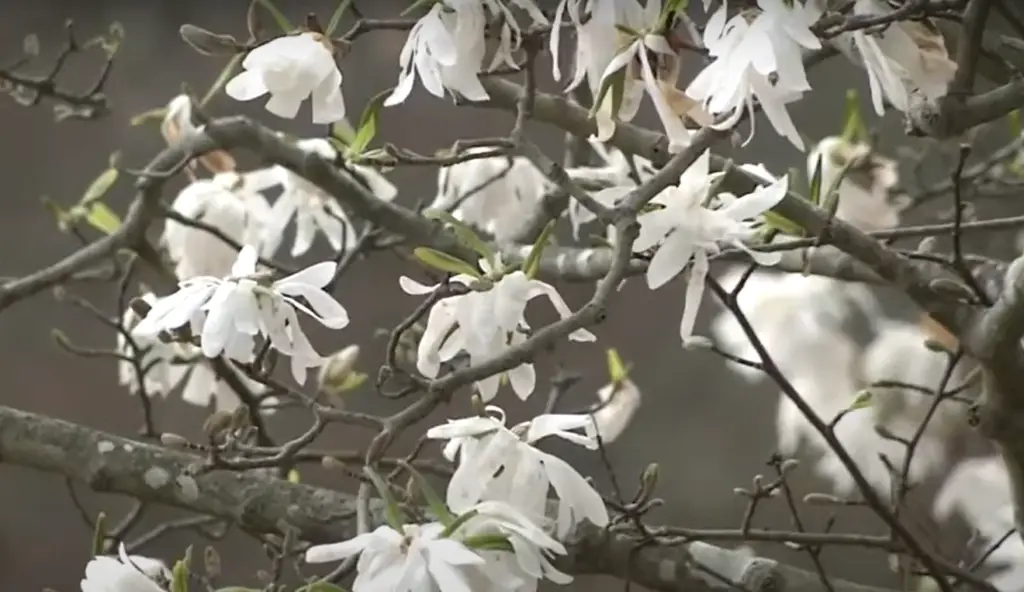
There are two ways that plants can avoid freezing damage. The first is to produce antifreeze proteins (AFPs), which bind to small ice crystals and prevent them from growing larger. The second is to increase the concentration of sugars in their sap, which lowers the freezing point of water and prevents ice crystals from forming in the first place.
Most plants cannot survive if they are frozen solid, but there are some that have evolved to withstand freezing temperatures. These plants are known as freeze-tolerant or cold-hardy plants. They have a variety of adaptations that allow them to survive in cold climates, such as:
- Waxy coatings on their leaves that prevent water loss
- Thick, leathery leaves that protect against frost damage
- Hollow stems filled with air that insulate against the cold
- Antifreeze proteins in their sap
If you live in an area with cold winters, you can choose to grow freeze-tolerant plants in your garden. These plants will be more likely to survive the cold weather and continue to prosper in your garden for years to come.
Plant Growth and Temperatures
Different plants have different temperature requirements for growth. Most plants will not grow if the temperature falls below freezing, although some can tolerate brief periods of freezing temperatures. In general, the warmer the temperature, the faster a plant will grow. However, there is such a thing as too much heat – extremely high temperatures can damage or kill plants.
Plants also have what is called an optimal temperature range – this is the range of temperatures in which they will grow best.
If the temperature gets too far outside of this range (either too hot or too cold), it can affect plant growth. [1]
In very cold weather, plants may stop growing altogether until the temperatures warm up again. In very hot weather, plants may start to wilt and their growth will slow down.
Symptoms of Plant Shock Due to Cold Weather
Plants can experience what is called “plant shock” when they are suddenly exposed to cold weather. The symptoms of plant shock include:
Drooping leaves
Leaves that are normally green may turn yellow or brown and droop down when they are exposed to cold weather. This is because the plant is not able to get enough water from the soil to keep the leaves hydrated.
Wilting
Wilting occurs when a plant does not have enough water in its leaves. They will start to droop and may even turn brown. If the wilting is severe, the plant may die.
Buds falling off
When a plant is exposed to cold weather, the buds may fall off before they have a chance to bloom. This can be devastating for gardeners who have been waiting all season for their flowers to bloom.
Brown or blackened leaves
If the leaves of a plant turn brown or black, it is an indication that the plant has been damaged by the cold.
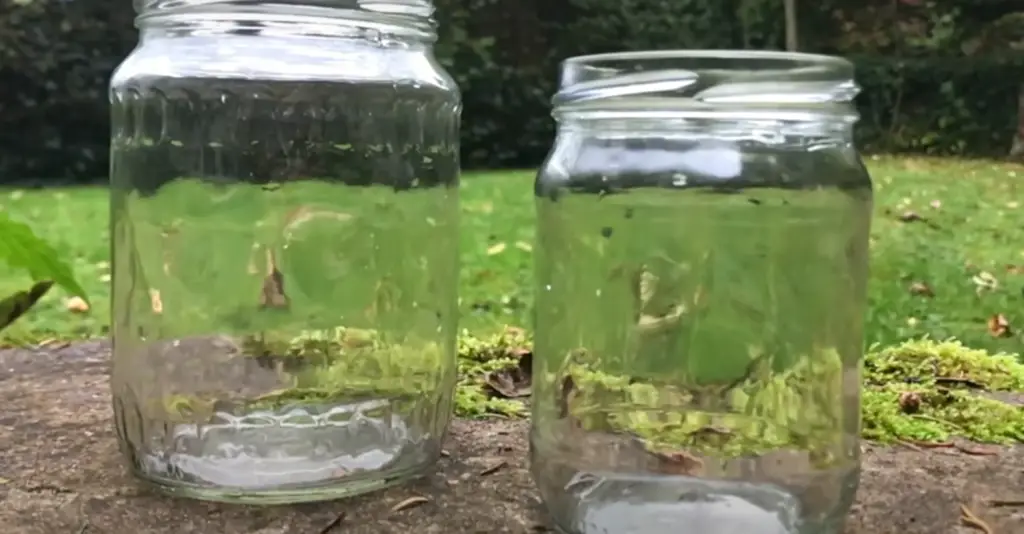
The leaves may be dry and brittle, and they may fall off the plant.
Minimising Damage to Plants
There are a few key things you can do to help your plants weather the winter months:
- Choose plants that are native to your area, or that have been proven to be winter hardy in your specific region. This will give them the best chance of surviving any cold snaps.
- Make sure they are well watered before the first frost hits. Dry soil is more susceptible to damage from freezing temperatures than moist soil.
- Mulch around your plants with organic matter like straw, leaves, or bark chips. This will insulate the roots and prevent them from being exposed to the cold air.
- If possible, shelter tender plants under an awning or porch, or build a temporary enclosure around them using burlap or frost cloth.
- Finally, don’t forget to give your plants a little extra TLC during the winter months. They’ll appreciate it when they start blooming again in spring!
Avoid Early Morning Sunshine
When the sun first comes up, the air is still cold and the ground has a chill. The sun’s rays can actually damage plants, especially if they’re already stressed from the cold. If you can wait until later in the day to do your gardening.
For example, you could rake leaves or pull weeds. Just be careful not to damage any delicate plants.
Choose Native Plants & Harden Off New Plants
One way to protect your plants from the cold is to choose varieties that are native to your area. Native plants have evolved over time to survive the conditions in your region, so they’re more likely to withstand a few nights of frost than non-native varieties. If you must grow a non-native plant, try hardening it off first. Hardening off is the process of acclimating a plant to colder temperatures by gradually exposing it to less heat and light over the span of a week or two. This will give the plant time to adjust its metabolism and produce more protective compounds before being subjected to freezing temperatures.
You can also take steps to insulate your plants from the cold. Try covering tender plants with a frost blanket or fabric at night. This will create a microclimate around the plant that will trap heat and moisture, protecting it from the colder air. Just be sure to remove the cover during the day so the plant can get some sunlight. You can also use empty plastic bottles or jugs as mini-greenhouses for small plants. Simply cut off the bottom of the bottle, place it over the plant, and secure it with a rubber band or piece of string. The clear plastic will trap heat and moisture around the plant, creating a warm microclimate.
Protecting Plants from Cold Damage
Plant and Site Selection
When it comes to protecting plants from cold damage, the first step is choosing the right plant for your garden. Not all plants are created equal when it comes to tolerance for cold weather, so it’s important to do your research beforehand.
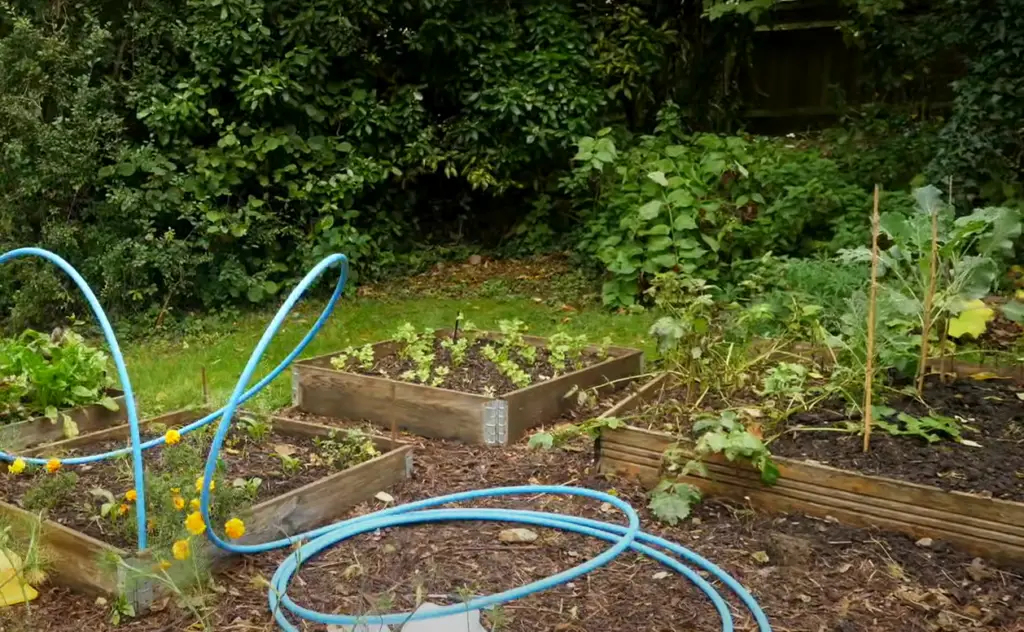
Once you’ve selected cold-tolerant plants, it’s also important to consider the site where they will be planted. Plants that are exposed to wind and sun are more likely to experience damage from the cold than those that are sheltered. If possible, choose a spot in your garden that is protected from the wind and has some afternoon shade. This will give your plants an extra layer of protection against the elements.
If you live in an area with very cold winters, you may also want to consider planting your garden in a raised bed.
They can also be covered with a layer of mulch or straw to further protect against frost damage.Plant Nutrition
In the winter, plants need less water and fertilizer because they are dormant. If you over-fertilize your plants in the winter, it can actually damage them. Stick to a light feeding every few weeks and make sure to water them only when the soil is dry.
If you live in an area with freezing temperatures, you may need to protect your plants from the cold weather. You can do this by covering them with a frost blanket or burlap. Make sure to remove any covers during the day so that your plants can get some sunlight.
When it comes to pruning, less is more in the winter. Avoid pruning anything back more than halfway as this can shock the plant. If you must prune, do it in the early morning when the temperature is still cool.
Gardening in the winter can be a challenge, but it’s definitely doable with a little bit of planning. Just make sure to take care of your plants and they will thrive all season long. Thanks for reading! I hope this was helpful.
Canopies and Shade
Shade from trees and shrubs can protect plants from the harsh winter elements. If you have ever been caught in a snowstorm, you know how quickly the wind can whip up the snow and create drifts. The same thing happens to your garden plants. Snow drifts can form around them, burying them under several feet of snow. This is why it is important to have some type of canopy or shade over your garden. A simple tarp placed over your garden will help to prevent this from happening.
Another benefit of having a canopy or shade over your garden is that it will help to keep the ground warmer. This is because the sun’s heat will be trapped beneath the tarp, making it easier for plants to stay warm.
If you live in an area where the winters are particularly harsh, you may want to consider investing in a greenhouse. Greenhouses provide protection from the wind, snow, and cold temperatures. They also allow you to control the amount of light and heat that your plants receive. This is perfect for those delicate plants that need a little extra TLC during the winter months.
Windbreaks
If you live in an area where the winters are harsh, then you need to take measures to protect your plants from the wind. You can do this by creating a windbreak. This can be done by planting trees or shrubs around the perimeter of your garden. Another option is to build a fence around the garden.
Windbreaks are especially important for protecting delicate plants from damage. If you have any plants that are particularly vulnerable to the cold, make sure they’re located in an area where they’ll be sheltered from the wind.
Covering and Heating
One way to ensure that your plants stay healthy during the winter is to cover them up. This will protect them from the cold weather and help them retain moisture. If you live in an area where it gets very cold, you may need to invest in a heater for your greenhouse or garden shed. This will keep the temperature inside at a comfortable level for your plants.
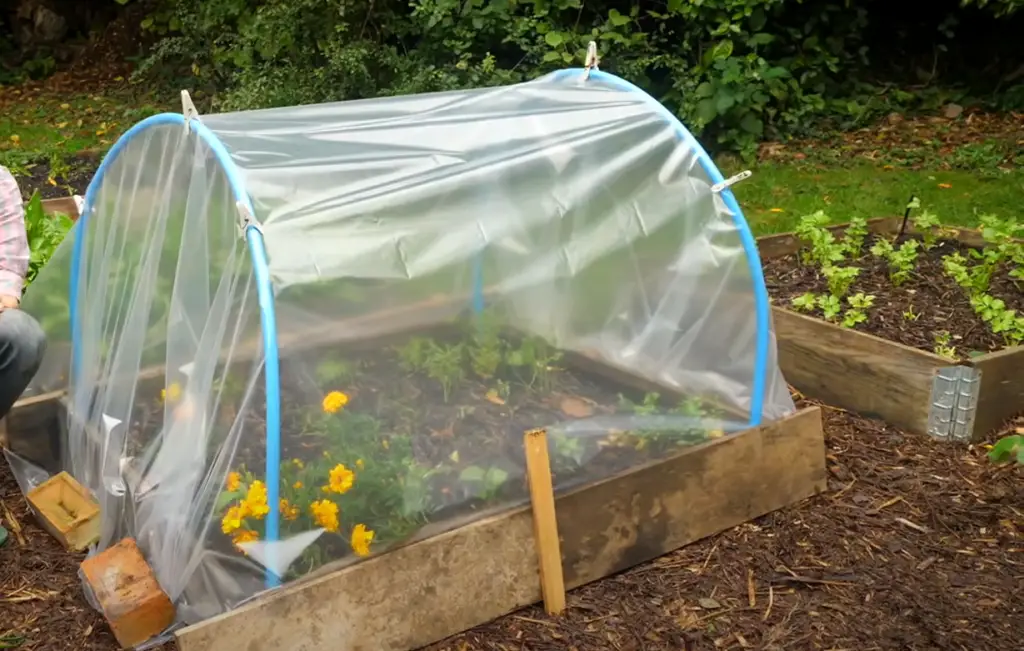
Another way is to water them regularly. They may not need as much water as they do during the summer, but they still need some water to survive. If you live in an area with very little rainfall, you may need to water your plants yourself. Just make sure that you don’t overdo it – too much water can actually be just as harmful as too little.
Finally, make sure that you fertilize your plants regularly. This will help them to stay strong and healthy. There are a variety of different fertilizers available, so talk to your local gardening store about which one would be best for your plants. [2]
Water Needs Before and After a Freeze
Water needs before a freeze are different than after a freeze. Before a freeze, it is important to water plants deeply and thoroughly so that they can store enough water to last through the cold weather. After a freeze, it is important to not water plants too much or too little. Over-watering can damage plant roots, while under-watering will stress the plant and make it more susceptible to disease.
Pruning
Pruning is an important part of gardening in the winter. Pruning can help to encourage new growth, shape plants, and remove damaged or diseased plant parts. Be sure to prune before the first frost so that plants have time to heal before the cold weather sets in.
When pruning, be sure to:
- Cut at a 45-degree angle just above a node (the place where leaves attach to the stem).
- Make clean cuts with sharp pruners.
- Avoid leaving stubs, which can damage the plant.
After pruning, it is important to fertilize plants so that they can recover from the stress of being trimmed back. A good rule of thumb is to apply fertilizer at half the rate recommended on the package. Apply fertilizer in the early spring, before new growth begins. [3]
FAQ
How are plants affected by the cold?
There are a few ways that cold weather can affect plants. The most common way is by damaging the plant’s cell membranes. This can cause the plant to lose water and nutrients, which can lead to wilting or death. Cold weather can also damage the roots of plants, making it difficult for them to absorb water and nutrients. In extreme cases, cold weather can kill a plant outright.
How do plants respond to cold weather?
Plants are adapted to their environment, including the temperature. They can be classified as either cold-tolerant or cold-sensitive. Cold-tolerant plants have special features that allow them to survive in freezing temperatures, while cold-sensitive plants will die when exposed to frost.
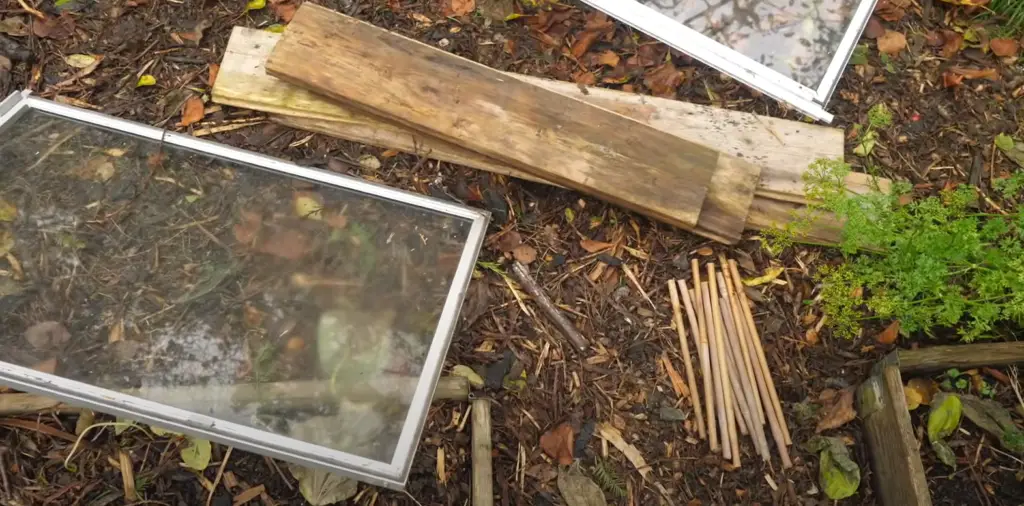
Perennial plants are better equipped to withstand colder temperatures because they go through a process called hardening off in the fall, which helps them acclimate to the changing seasons. [4]
When the weather gets colder, most plants will stop growing and enter a state of dormancy. This is a survival mechanism that helps them to conserve energy and protect themselves from the cold. During dormancy, plants will often lose their leaves as an additional way to reduce water loss.
What happens to plants in cold environments?
Plants are not as active in cold weather, meaning they don’t grow as quickly. The process of photosynthesis also slows down in colder temperatures. While a plant’s growth may slow, its metabolism doesn’t necessarily stop. In fact, some plants go into what’s called “winter mode.” This means they prepare for the cold months by storing food and water.
Certain plants are more sensitive to cold than others. For example, tropical plants that are used to warm climates will struggle in colder temperatures. If you live in an area with severe winters, it’s important to research which plants are best suited for your climate before adding them to your garden. [5]
When temperatures dip below freezing, water inside the plant cells can turn into ice. This can cause the cells to rupture and the plant to die. To prevent this from happening, plants produce a special type of sugar called “anti-freeze.” This sugar helps lower the freezing point of water, which protects the plant cells from damage.
What does cold damage look like on plants?
Cold damage can appear on plants in a number of ways. The most common symptom is wilting, followed by leaf drop and browning. In extreme cases, the plant may die.
Some plants are more susceptible to cold damage than others. Annuals and tender perennials are particularly vulnerable, as they haven’t had time to develop strong roots and stems. evergreens, on the other hand, are better equipped to withstand the cold since they don’t lose their leaves in winter. [6]
How does cold temperature affect seed germination?
Cold temperatures can affect the germination process of seeds by slowing or preventing it altogether. If a seed is exposed to freezing temperatures, its cells may become damaged and unable to grow. Additionally, cold temperatures can cause dormancy in many types of seeds which can significantly delay germination. To ensure successful germination of your garden’s seeds during cooler weather, you should use a seed starting mix with a higher level of organic matter and store the containers in an area where temperature fluctuates less.
Why can’t plants survive in the cold?
When temperatures drop below freezing, plants can no longer photosynthesize and begin to shut down their processes. They may not die immediately when exposed to cold temperatures, but prolonged exposure will cause them to suffer from frost damage or even death. Cold weather can also affect the growth of plants in a garden. Low temperatures slow down the metabolic activities of plants, resulting in a decrease in both photosynthesis and respiration rates. Furthermore, low temperatures can also disrupt plant cell membranes and inhibit root growth. This can lead to decreased nutrient absorption and water uptake by plants, resulting in stunted growth or wilting leaves. In extreme cases, cold weather can kill off entire crops.
In order to protect your garden from the effects of cold weather, it is important to take the necessary precautions. If you live in an area that experiences cold temperatures, you should cover your plants with blankets or sheets during the night or on days when temperatures drop below freezing. You can also provide them with a generous layer of mulch to insulate their roots and protect them from extreme weather conditions. Additionally, it is recommended to water your plants deeply before the temperature drops so they are better prepared for any frosty weather. Lastly, make sure to prune away dead or dying branches and leaves in order to maintain healthy plant growth throughout the winter season.
Do plants grow slower in the cold?
Yes, plants grow slower in cold weather because the cold slows down the rate of photosynthesis. In addition, many plants cannot produce food when temperatures drop below a certain level. Additionally, cold temperatures can also damage plant foliage, stems and roots. This can weaken a plant’s ability to survive and reproduce. Cold-weather stress may also reduce the amount of nutrients available to plants from the soil, which can impair growth or even kill them completely. In some cases, cold weather may even cause new seedlings to die off before they have had time to reach maturity.
Protective measures such as frost blankets or row covers are sometimes used by gardeners when temperatures drop significantly during certain times of year. These coverings help trap the warmth from the sun and soil, allowing plants to survive the cold. Planting in well-draining soil and areas that receive more sunlight can also help reduce cold stress on plants. Additionally, watering plants thoroughly before a freeze can also help protect them from damage. Finally, planting hardier plants that are better able to tolerate colder temperatures may be a good solution for gardens in colder climates.
How do plants survive freezing conditions?
Cold weather can have a significant effect on plants in your garden. When temperatures drop below freezing, many plants are unable to withstand the cold and their cells will become damaged by ice crystals that form inside them. This damage can range from minor wilting of leaves to more serious tissue losses that could result in death of the plant. In order to protect plants in your garden from extreme cold weather, there are several steps you can take.
One way to help protect your plants is by using mulch around the base of each plant. The mulch acts as an insulator, keeping soil temperatures somewhat warmer than it would be without the layer of insulation between it and the air temperature outside. Additionally, cutting back foliage before winter sets in can help. Many plants retain more moisture in their leaves and stems than necessary, so cutting them back will reduce the amount of water they need to stay alive during cold temperatures.
Covering your plants with a protective cover is another way to protect them from extreme cold. A tarp or canvas sheet can be used to provide an extra layer of insulation against low temperatures, while also helping to keep out heavy snow and frost. If you do choose to use a tarp, make sure it’s not too tight as this could trap more moisture inside the plant which could cause rot.
How do plants manage in the coldest of winter?
Plants are surprisingly resilient and can often survive even the coldest temperatures as long as they are provided with adequate protection. Many species of flowers, vegetables, and shrubs have evolved over centuries to cope in extreme climates, either by going dormant or actively growing during winter months.
For example, some plants that don’t normally survive freezing temperatures may be able to do so if the area is well-drained and receives lots of sunlight. These plants will typically go into a hibernation-like state until the soil warms up enough for them to continue growing again. Other species of plants may actually bloom during cold weather due to their increased tolerance for low temperatures.
No matter what type of plant you’re growing in your garden, it’s important to keep an eye on the temperature and take steps to protect them from extreme cold. By providing adequate insulation and a little extra care during this time of year, you can ensure that your plants will survive and thrive during winter.
What happens to garden trees and plants in the winter?
When temperatures drop below freezing, many plants can suffer from frost injury or even die. For trees and shrubs in particular, the cold winter months can be particularly damaging as they are unable to move their roots away from icy ground. Additionally, the leaves of some species may freeze solid and remain attached to the tree through winter months.
In order to protect trees and other plants from these conditions, it’s important to wrap them with burlap or a light blanket when temperatures start to drop. This will help insulate the foliage from cold air and also provide some protection against heavy snowfall accumulation on branches or leaves which could cause breakage. Additionally, applying mulch around the base of the tree will help keep soil temperature more consistent and will also help to protect roots from frost damage.
When the weather warms up, it’s important to remember that trees and shrubs may still be in a weakened state. As such, they should receive extra water and nutrients throughout the summer months to help them regain their strength before winter comes around again. With proper care, even the most delicate of garden plants can survive cold weather conditions with minimal injury or loss.
Can plants survive extreme cold?
While extreme cold can cause permanent damage to some plants, many species are surprisingly resilient and able to survive temperatures that dip below freezing. Plants that tend to survive better during extreme cold include those with thicker leaves or stems such as rose bushes, holly, boxwoods and conifers. Additionally, providing extra insulation and protection from the elements is essential for helping any type of plant make it through a cold winter.
Soil drainage is also important when dealing with extreme cold temperatures; soil that remains soggy will be more prone to frost damage than well-drained soils. With good care and appropriate protection measures in place, even the most delicate garden plants can often make it through winter unscathed.
Do plants decay in winter?
The answer to this question is yes, but it depends on the type of plant and the severity of cold weather. Some plants can handle a light frost while others will not be able to survive even a few degrees below freezing. For example, annual flowers such as pansies may die if a hard freeze hits while perennial flowers like peonies are much more tolerant of cold temperatures and may come back in the spring with little or no damage. In general, most trees and shrubs can tolerate temperatures down into single digits without significant damage, although young trees may suffer some leaf burn from frost.
In addition to physical damage from cold temperatures, plants also face other challenges during winter months that can lead to decay. One issue is shorter days, which can lead to a decrease in photosynthesis and slow down the plant’s growth. Lack of moisture is also an issue because during winter months, the ground is often too hard for water to penetrate, leading to drought-like conditions. Finally, plants are more susceptible to disease and pests when temperatures drop, so gardeners should keep an eye out for any signs of infestation or infection.
Can plants get cold shock?
Yes, plants can get cold shock. Cold shock is a sudden change in temperature that can cause stress on a plant and impede its growth. For example, if the temperature drops too low for the type of plant it is or if there are drastic changes between day and nighttime temperatures, this could cause cold shock to a plant. This will damage or even kill your plants as they may not be able to survive in such conditions.
Another way cold weather can negatively affect garden plants is by damaging their root systems. Cold weather causes soil to freeze which can disrupt the earthworms and microbes responsible for aerating the soil, leading to poor drainage and stunting growth. When the roots of a plant are exposed to these freezing temperatures they’ll become brittle and die off, making it almost impossible for the plant to absorb enough water and nutrients.
Finally, cold weather can cause plants to go dormant. This happens when a plant’s internal biochemical processes slow down or stop altogether due to freezing temperatures. As a result, the leaves will wilt and discolor as the growth of new shoots is inhibited. Dormancy can be beneficial in some cases as it can help the plant survive through winter months; however, if not managed properly it could lead to stunted growth or even death of the plant.
Why do plants lose their leaves in winter?
In cold climates, plants often experience a period of dormancy caused by the cold temperatures known as winter. During this time, photosynthesis slows down or stops completely. This causes the leaves to become unable to produce enough energy for the plant, so it begins to lose its leaves in order to conserve energy and resources. Since many plants are unable to survive in freezing temperatures, they will usually go dormant during the winter months and then return when the weather warms up again.
Cold air can also affect a plant’s cell structure, causing them to become brittle and fragile. The cold air can cause water inside cells to freeze, which can damage the cell walls and prevent essential nutrients from entering or leaving. This lack of nutrients can result in stunted growth and even death of the plant.
In addition to cold temperatures, plants in cold climates may also experience shorter growing seasons than those in warmer areas. This means that plants have fewer hours of sunlight and warmth to grow during their growing season, which can result in slower or weaker growth overall. Plants may also succumb to diseases more easily due to the lack of warmth, making them more vulnerable to pests and fungal infections.
Do plants lose water in winter?
When temperatures drop, the rate of water evaporation from plants decreases significantly. This decrease in transpiration can cause stress to some plants, particularly those that prefer a warmer climate. If the temperature gets too cold for too long, it can result in plant death due to dehydration or damage to its tissues. Cold weather can also make plants more susceptible to diseases and pests because their natural defenses are weakened by the lack of water. Additionally, cold weather can interfere with a plant’s ability to properly transport nutrients and moisture throughout its system, making it more likely to wilt or die prematurely. Even if the temperature isn’t extreme enough to kill a plant outright, any prolonged exposure to colder temperatures can stunt its growth and diminish its bloom production. Gardeners should protect their plants from cold weather by providing them with adequate shelter, such as a greenhouse or windbreak. The use of mulch around the base of plants can also help to insulate soil and keep temperatures more consistent. Additionally, providing extra water during periods of extended cold can help maintain plant health. By taking these precautions, gardeners can successfully protect their plants from the damaging effects of cold weather.
Useful Video: How do cold temperatures affect plants?
Conclusion
So, how can cold weather affect plants in a garden? Well, it all depends on the type of plant. Cold-tolerant plants will survive in freezing temperatures, while cold-sensitive plants will die when exposed to frost. Most plants will enter a state of dormancy during colder weather, which helps them conserve energy and protect themselves from the elements. So, if you’re planning on gardening in the winter, be sure to choose your plants carefully! Thanks for reading!
References:
- https://www.gardeningknowhow.com/plant-problems/environmental/why-cold-affects-plants.htm
- https://www.envii.co.uk/garden-blog-post/cold-weather-affects-plants/
- https://today.tamu.edu/2019/11/11/how-to-prepare-your-plants-for-cold-weather/
- https://plantae.org/how-plants-sense-cold-and-activate-cold-tolerance/
- https://nsidc.org/cryosphere/snow/plants.html
- https://hgic.clemson.edu/factsheet/cold-damage/










Leave a Reply
View Comments